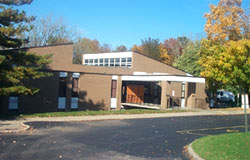Anshai Emeth History
Prior to 1863
The first Jewish settlers came to Peoria in approximately 1847. They soon organized themselves into groups and worshiped in private homes. Early settlers included Jacob Liebenstein (1848), Henry Ullman and Leopold Rosenfeld (1849), Abraham Schradski and Leopold Ballenberg (1851), and Aaron, Harry and David Ulman (1852), and Henry Schwabacker. Many of their descendants continue to live in the Peoria community.
Religious school classes were organized by 1852. In the same year, these Jewish settlers organized a burial association and bought a lot for the use as a cemetery. With this purchase grew the first organized Jewish life in Peoria. Religious services were held in various halls including Washington House on North Washington Street.
Abraham Frank, A. Rosenblat, Hart Ancker, A. Ackerland, Arnold Goodheart, and Abraham Solomon formally organized a congregation in 1859 and named themselves “Anshai Emeth,” or “People of Truth.”
1863 to 1898
On May 2, 1863, the members of this congregation purchased the old Presbyterian church from the Universalists with donations from both local Jews and Christians. The building was located on Fulton Street between Adams and Jefferson streets. In 1863, the congregation had 34 members. Regular services were held under the direction of Rabbi Max Moses from 1863 and 1873.
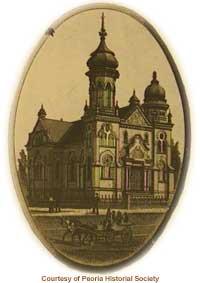
A significant change in the composition of the Jewish population of Peoria had taken place during this period. The original congregation was composed of reform members who emigrated from western Europe. By 1873, orthodox immigrants from eastern Europe (Hungary and Poland) and Russia began to arrive in Peoria. The orthodox community purchased a cemetery and formed a separate congregation, Beth Israel. In 1879, congregation Anshai Emeth purchased property at the corner of Jefferson Avenue and Liberty Street with the hopes of uniting both congregations under a single roof, but shortly thereafter those hopes were abandoned. Subsequently, in 1887, the orthodox Jews formed the Aguda Achim congregation.
In 1896, the Anshai Emeth temple was destroyed by fire. Over the next two years, the congregation worshiped in various Christian churches.
1898 to 1967
The Cornerstone of the next temple was laid on March 2, 1898, on a lot on the north west corner of Monroe and Hancock streets. The original building was erected at a cost of about $35,000 and was dedicated on the afternoon of September 9, 1898. The temple was built of Lake Superior Sandstone and is currently occupied by the Christian Assembly Church. The Church’s congregation has maintained many of the Jewish artifacts within the building including the stain glass windows and alter decorations as seen below.
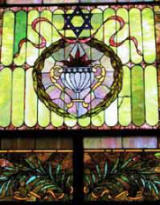
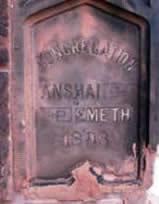
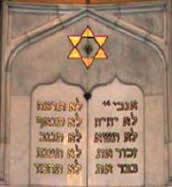
1967 to the Present
By the early 1960s, our congregation outgrew its facilities. A larger and modern facility was dedicated on September 8, 1967.

